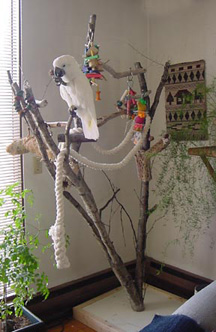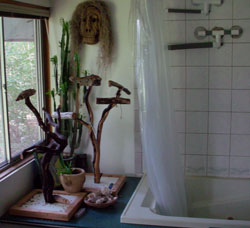

Lost a bird? Found a bird?
Call (907) 351-2762
Navigation
Calendar
2025
SAT, DEC 27, 2025
Board Meeting, 5-7PM (Zoom)
2026
TUE, JAN 6, 2026
Educational Meeting
(Zoom)7-9PM
SAT, JAN 24, 2026
Board Meeting, 5-7PM (Zoom)
TUE, FEB 3, 2026
Educational Meeting
7-9PM (Zoom)
SAT, FEB 21, 2026
Board Meeting, 5-7PM (Zoom)
TUE, MAR 3, 2026
Educational Meeting
7-9PM (In-person and Zoom)
SAT, MAR 28, 2026
Board Meeting, 5-7PM (Zoom)
TUE, APR 7, 2026
Educational Meeting
7-9PM (Zoom)
SAT, APR 25, 2026
Board Meeting, 5-7PM (Zoom)
TUE, MAY 5, 2026
Educational Meeting
7-9PM (Zoom)
SAT, MAY 16, 2026
(estimated) "Reading Rendezvous" on the Loussac Library lawn 12-4pm
SAT, MAY 23, 2026
Board Meeting, 5-7PM (Zoom)
TUE, JUN 2, 2026
NO EDUCATIONAL MEETING UNTIL AUGUST 4
SAT, JUN 27, 2026
Board Meeting, 5-7PM (Zoom)
SAT, JUN 27, 2026
Bird Club Picnic, Abbott Park, 11AM-3PM
CLICK HERE
TUE, JUL 7, 2026
NO EDUCATIONAL MEETING UNTIL AUGUST 4
SAT, JUL 25, 2026
Board Meeting, 5-7PM
TUE, AUG 4, 2026
Educational Meeting
7-9PM
SAT, AUG 22, 2026
Board Meeting, 5-7PM (Zoom)
TUE, SEP 1, 2026
Educational Meeting
7-9PM (In-person and Zoom)
SAT, SEP 26, 2026
Board Meeting, 5-7PM (Zoom)
TUE, OCT 6, 2026
Educational Meeting
7-9PM (Zoom)
SAT, OCT 24, 2026
Board Meeting, 5-7PM (Zoom)
TUE, NOV 3, 2026
Educational Meeting
7-9PM (Zoom)
SAT, NOV 21, 2026
Board Meeting, 5-7PM (Zoom)
TUE, DEC 1, 2026
Holiday Potluck AND Board Elections
(In-person and Zoom)
SAT, DEC 26, 2026
Board Meeting, 5-7PM (Zoom)
Bird Care: Activity
General Information •
Veterinarians •
Health and Safety
Housing •
Nutrition •
Activity •
Downloads
| Toys |
|
We cannot say enough about the importance of toys! Toys must be continuously available for the birds and rotated to keep the bird's mind stimulated. Different size birds need different size toys. When selecting toys, make sure that they are bird safe. Remember, even though toys may be labeled "bird safe" at the store, always check them thoroughly to make sure they are right for your type of bird. Some birds chew more than others and the danger of swallowing toy parts could mean the loss of your bird. Toys with bells on them need to have the clapper of the bell checked to see if it might be easily removed and swallowed by your bird. Toys with ropes must be watched for fraying. Loose strings can get wrapped around toes or worse, strangle your bird. When arranging toys do not over clutter the cage. Hang toys more towards the outside walls of the cage (birds need to have room to stretch their wings). Change toys frequently to keep the bird entertained. Toys also need to be kept clean. Provide toys that encourage foraging (ones that you can hide treats in). You can be creative and make your own toys, just be safe! |
| Exercise |
|
Exercise is almost as important as food. If your bird is free flighted (its wings are not clipped) let the bird fly at least 20 minutes or more a day. Having a flighted bird is a scary thing and you must be very attentive to making safe flying areas. Close curtains, or place appliques or hanging items on the window to make it look like a barrier and not a clear pathyway to freedom. Watch out for open doors and windows! An environment where children and adults are constantly coming and going in and out of the home is not a safe environment for a flighted bird! A free flighted bird is easier to exercise than a clipped bird that sits around all day, but you can work around that. If your bird's wings are clipped, the best form of exercise is mock flying. You can do this by having the bird step up, hold onto the feet with your thumb, and raise and lower the bird at a speed that will make the bird flap its wings. Do this for short periods (30 seconds to a minute) a few times a day. You may have to start out slow at first. Make sure not to stress your bird. Another method is to secure a Boing® (springy, coiled, rope-wrapped perch) to the ceiling with a swivel hook and teach the bird to "fly" the Boing ®. The bird will go in circles and have great fun spinning the Boing ® around! |
| Playing |
|
Play is very important to your bird. It also helps in setting guidelines for your bird to follow. Out-of-cage play needs to be monitored. Set up rules for your bird to follow and keep reinforcing them. Let your bird know that certain areas of the house are off limits. If the bird is flighted, do this by returning the bird to its cage when it goes somewhere it should not. There are a few good bird-training books on the market to help with behavior. One book is titled "Guide to a Well Behaved Parrot" by Mattie Sue Athan. Remember: the knowledge we posses, or can learn, makes the difference in our birds. There are also many ways to potty train your birds. Trick training can be great ways to interact with your birds so they are not bored. Make training sessions playtime fun! |
| Play Gyms |
|
|
| Other Types of Perches and Playstands |
|
|
|
The Alaska Bird Club • P.O. Box 101825 • Anchorage AK 99510 |
 Another way to excersize your bird is use play gyms. You can buy ready-made ones or make your own. The design of the
home-made play stand shown to the right was concieved by Alaska Bird Club member Leanna Rein and other club members
who foraged for trees that would make good bird stands. The playstand in this image has an alder "trunk" with cross perches
of driftwood gathered in Homer. A curious note: birds tend to head for the highest branch and stand there, which is OK
because they get some exercise from the process of climbing. Make sure the base of your home-made stand is stable! If you
do not have a carpenter in the family, you can use old, wide Christmas tree stands (after all, they are designed to hold trees).
You can build stands with perch sizes appropriate to your bird(s). On this tree, because it was designed for a cockatoo, there
is a cross perch made out of cactus branch (with small holes in it). This comes in handy for hiding food treats and making
the bird forage for food, a natural activity we should encourage in our birds. Birds will chew the branches, so you may need
some spares ready to be installed. Make sure the materials you use have not been sprrayed with pesticide or herbicide, and
are woods that are safe for parrots. This particular stand, because it was made for a cockatoo has stainless steel screws for
the cross perches as the cockatoo tends to chew on everything!
Another way to excersize your bird is use play gyms. You can buy ready-made ones or make your own. The design of the
home-made play stand shown to the right was concieved by Alaska Bird Club member Leanna Rein and other club members
who foraged for trees that would make good bird stands. The playstand in this image has an alder "trunk" with cross perches
of driftwood gathered in Homer. A curious note: birds tend to head for the highest branch and stand there, which is OK
because they get some exercise from the process of climbing. Make sure the base of your home-made stand is stable! If you
do not have a carpenter in the family, you can use old, wide Christmas tree stands (after all, they are designed to hold trees).
You can build stands with perch sizes appropriate to your bird(s). On this tree, because it was designed for a cockatoo, there
is a cross perch made out of cactus branch (with small holes in it). This comes in handy for hiding food treats and making
the bird forage for food, a natural activity we should encourage in our birds. Birds will chew the branches, so you may need
some spares ready to be installed. Make sure the materials you use have not been sprrayed with pesticide or herbicide, and
are woods that are safe for parrots. This particular stand, because it was made for a cockatoo has stainless steel screws for
the cross perches as the cockatoo tends to chew on everything! Your parrot wants to be with you because you are part of the flock. The picture to the left shows two perches where parrots
can sit while you shower where the humidity is excellent for them. The perches you see in the shower are for bath days, however
larger birds must have a more secure perch supported by more than than suction cups. You can get PVC perches that stay in the shower,
or portable ones that you bring in when needed. The goal is to get the birds in the shower! Another type of perch is simply a wicker
basket with a brick or heavy rocks in it to stabilize it so the bird can perch (and chew) on the handle of the basket. You can
find non-varnished, plain baskets with larger handles in many thrift and craft stores.
Your parrot wants to be with you because you are part of the flock. The picture to the left shows two perches where parrots
can sit while you shower where the humidity is excellent for them. The perches you see in the shower are for bath days, however
larger birds must have a more secure perch supported by more than than suction cups. You can get PVC perches that stay in the shower,
or portable ones that you bring in when needed. The goal is to get the birds in the shower! Another type of perch is simply a wicker
basket with a brick or heavy rocks in it to stabilize it so the bird can perch (and chew) on the handle of the basket. You can
find non-varnished, plain baskets with larger handles in many thrift and craft stores.